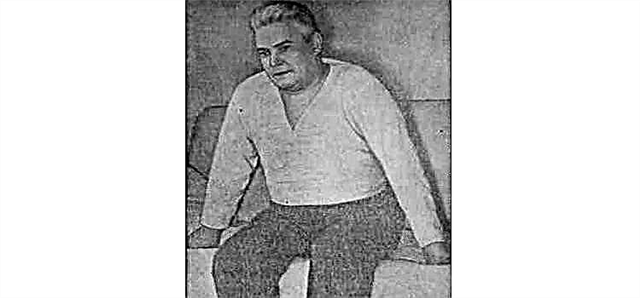The appearance of nonspecific neurological symptoms is a common symptom of various diseases not associated with brain pathology. Periodic headaches, surges in blood pressure, violation of the "sleep-wakefulness" regime can be caused by both endocrine disorders and nervous regulation of processes in the body. The normal state of the brain tissue is ensured by an adequate supply of oxygen and glucose in the blood. Disturbances of blood flow are often organic or functional in nature, which include angioedema of the cerebral vessels.
What is cerebral angioedema?
 The normal blood supply to the brain tissue is produced by the system of the internal carotid artery and the vertebrobasilar basin (VBP), which branch off from the subclavian artery on both sides. Control of the transport of nutrients and oxygen to the neurons of the brain is provided by autonomous regulatory structures:
The normal blood supply to the brain tissue is produced by the system of the internal carotid artery and the vertebrobasilar basin (VBP), which branch off from the subclavian artery on both sides. Control of the transport of nutrients and oxygen to the neurons of the brain is provided by autonomous regulatory structures:
- myogenic (mouse) - with a decrease in blood flow, smooth muscle cells of the vascular wall are activated and cause vasoconstriction (narrowing of the lumen in order to increase blood pressure);
- metabolic - activated in case of impaired metabolism;
- neurogenic.
Angiocerebral dystonia is a violation of the adaptation of the tone of blood vessels (mainly resistive arterioles) of the brain to environmental conditions. Pathology is characterized by a change in the structure of the vascular wall, with damage to muscle tone with the development of persistent spasm or dilatation (expansion of the lumen).
There are three variants of discirculation, which lead to local or systemic circulatory disorders with the development of insufficiency or excess blood flow.
The pathogenesis of the disease is due to the instability of developed reflexes and vasomotor adaptation mechanisms. Dystonia is based on labile autoregulation of vascular tone with the development of spastic or hypokinetic angiopathy.
The classification of cerebral angioedema is carried out according to the following criteria:
- etiology: primary (neurogenic) and secondary (symptomatic);
- localization: focal or systemic;
- predominance of pressure levels: normo-, hyper- and hypotension;
- the nature of the disorders: persistence or angioedema crises.
Dystonia affects both arteries and venous vessels (sometimes in combination), which leads to a characteristic complex of clinical signs.
The reasons for the formation of pathology and its clinical manifestations
 Angiodystonic syndrome is not an isolated disease, but a concomitant (secondary) complex of symptoms, disorders caused by the main cause. Pathology develops against the background of the following conditions:
Angiodystonic syndrome is not an isolated disease, but a concomitant (secondary) complex of symptoms, disorders caused by the main cause. Pathology develops against the background of the following conditions:
- endocrine disorders from the ovaries (including during pregnancy), adrenal glands, pituitary gland and thyroid gland;
- dysfunction of the autonomic nervous system of the vagotonic or sympathotonic type;
- acute or chronic infections;
- occupational diseases (intoxication, vibration sickness, noise exposure);
- spondylogenic disorders (against the background of diseases of the spine);
- neurological pathologies, the consequences of craniocerebral trauma;
- allergic reactions;
- mixed genesis of angioedema.
Previously, it was believed that the pathology is characteristic only of adults, but recently there has been a tendency to diagnose neurovegetative disorders in schoolchildren.
Regardless of the underlying disease, signs of cerebral angioedema are formed against the background of primary cerebral circulation failure. Typical clinical symptoms:
 headaches of different localization, intensity and nature;
headaches of different localization, intensity and nature;- lability of blood pressure;
- drowsiness or insomnia;
- numbness of the limbs;
- distortion of visual images (in some cases with damage to the vessels of the retina), hearing, scent and taste;
- noise in ears;
- memory impairment.
Indirect symptoms of cerebrovascular accident include undifferentiated pain in the limbs, neck or back.
Detailing complaints and diagnostic measures: how to be examined?
In order to determine the primary cause of disorders, it is necessary to differentiate clinical signs according to the prevailing syndromes.
The headache can be of the nature:
- cephalgic, which occurs in the morning, is accompanied by weakness, frontal-parietal localization, high intensity and paroxysmal character;
- migraine-like, which is characterized by one-sided lesion, high intensity, pulsating nature and disruption of normal activity.
The relationship between the onset of an attack and the level of blood pressure, medication intake, physical activity, emotional stress and past illnesses is determined. In addition, the hereditary history and the dynamics of changes during the pathology are taken into account.
Clinical examination involves the study of muscle strength and tone, the severity of tendon reflexes, the state of the cranial and spinal nerves for differential diagnostics with organic pathology.
 The most commonly used method for diagnosing disorders in the clinic is rheoencephalography (REG). The method makes it possible to estimate the value of the electrical resistance of the vascular wall in different phases of blood filling. At the conclusion of the rheoencephalogram, the speed and volume of blood flow, the consistency of tone and the options for violations are indicated:
The most commonly used method for diagnosing disorders in the clinic is rheoencephalography (REG). The method makes it possible to estimate the value of the electrical resistance of the vascular wall in different phases of blood filling. At the conclusion of the rheoencephalogram, the speed and volume of blood flow, the consistency of tone and the options for violations are indicated:
- hypotonic - with impaired blood flow or outflow through the vessels due to the failure of the muscle layer.
- hypertonicity - characterized by spastic contraction of the muscles of the vascular wall.
For the purpose of differential diagnosis, X-ray methods (computed or magnetic resonance imaging), Doppler ultrasonography of the neck vessels and enlectroencephalography (EEG) are used.
Methods for medical correction of the condition: what treatment?
Methods for the treatment of angioedema of the cerebral vessels are determined by the primary etiology of the disorder and are used in the case of de- or subcompensation of the disorders.
Etiotropic (directed at the cause) therapy involves the use of antibacterial, hormonal agents, surgical interventions in a specific case.
 Impact on developmental mechanisms (pathogenetic treatment) includes medications:
Impact on developmental mechanisms (pathogenetic treatment) includes medications:
- antispasmodics - drugs that reduce vascular tone in the hyperconstrictive type;
- pain relievers - non-steroidal anti-inflammatory;
- antihypertensives - to correct high blood pressure;
- sedatives (sedatives) drugs;
- antiarrhythmic drugs for cardiac etiology of dystonia;
- drugs that improve cerebral blood flow (nootropics).
In addition, for the nonspecific improvement of metabolic processes in the nervous tissue, vitamin complexes and antioxidant agents are used.
Conclusions
Impaired autonomic regulation of vascular tone in the brain is a common cause of neurological symptoms in people of all ages. Angiodystonic signs include headache, sleep disturbances, numbness, and autonomic disorders. Diagnostics is carried out taking into account complaints, examination by a neurologist and other specialists, as well as additional methods. Treatment is prescribed in accordance with the identified changes.

 headaches of different localization, intensity and nature;
headaches of different localization, intensity and nature;

